Gajjar ka Halwa Symphony of Sweetness
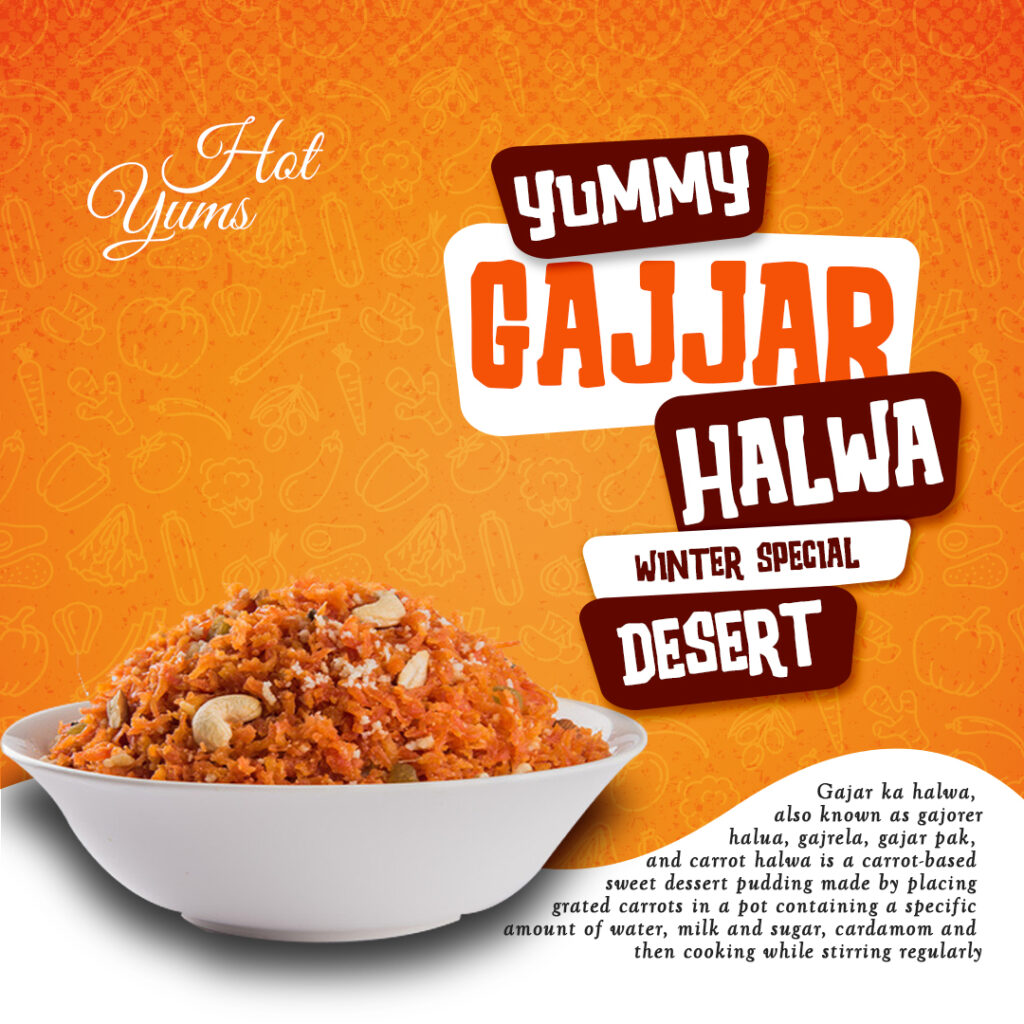
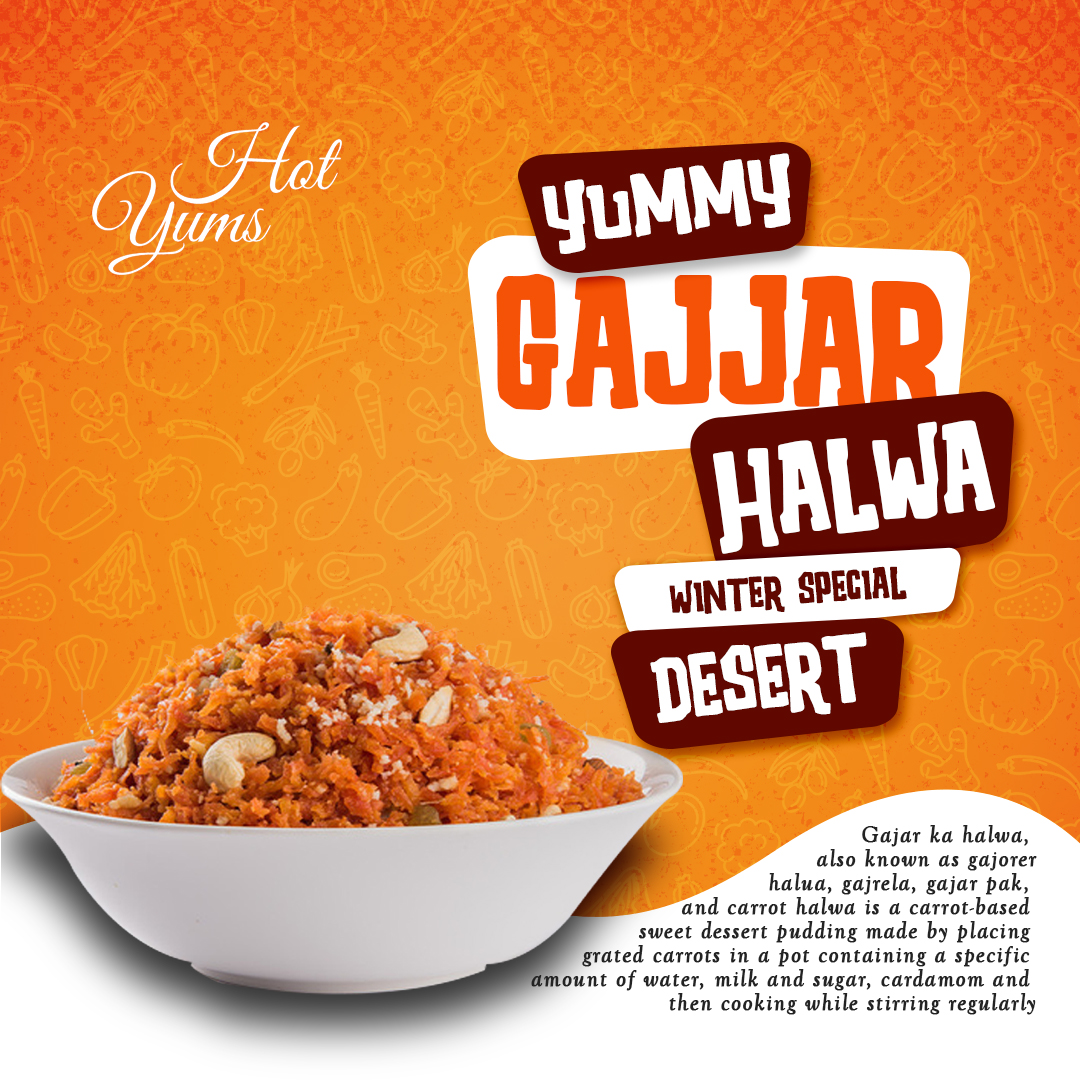
In the vibrant tapestry of Indian desserts, Gajjar ka Halwa stands as a masterpiece of flavor, tradition, and indulgence. This delectable sweet treat, made from humble carrots, Gajjar ka Halwa Symphony of Sweetness transcends its simple ingredients to become a symphony of sweetness that captivates taste buds and weaves a tale of culinary artistry. Let’s embark on a journey into the heart of Gajjar ka Halwa, exploring its origins, preparation, and the cultural significance that makes it a beloved part of Indian cuisine.
The Roots of Gajjar ka Halwa
1. Historical Significance :
Gajjar ka Halwa, also known as Carrot Halwa, traces its roots deep into the culinary history of the Indian subcontinent. Its origins can be linked to the rich traditions of North Indian cuisine, where carrots were creatively transformed into a luscious dessert.
2. Seasonal Delight :
Carrots, a winter vegetable in India, are abundant during the colder months. Gajjar ka Halwa, therefore, became not only a delicious indulgence but also a celebration of the seasonal harvest, marking the arrival of winter festivities.
The Art of Preparation
1. Ingredients :
- Fresh and tender carrots are grated to form the base of Gajjar ka Halwa. Other essential ingredients include ghee (clarified butter), milk, sugar, and a generous sprinkling of nuts such as almonds and cashews.
2. Slow-Cooking Magic :
- The magic of Gajjar ka Halwa lies in the slow and patient cooking process. Grated carrots are simmered in a pot with ghee until they release their natural sweetness. The addition of milk allows the carrots to absorb its richness, creating a creamy and luxurious texture.
3. Sweet Symphony :
- Sugar is then added in just the right amount, allowing the sweetness to balance the natural flavors of carrots. The halwa is stirred continuously, coaxing it into a harmonious blend of caramelized goodness.
4. Nuts and Aromatics :
- To elevate the sensory experience, a medley of nuts is added. Almonds and cashews, toasted to perfection, provide a delightful crunch. A dash of aromatic cardamom adds a fragrant note that completes the symphony of flavors.
Gajjar ka Halwa in Indian Culture
1. Festive Celebrations :
- Gajjar ka Halwa holds a special place in Indian festivals and celebrations. It is a quintessential part of the menu during Diwali, weddings, and other joyous occasions, symbolizing prosperity and sweetness in life.
2. Generational Tradition :
- The art of making Gajjar ka Halwa is often passed down through generations. Families gather in the kitchen, sharing stories and laughter as they prepare this beloved dessert, creating a bridge between the past and the present.
Modern Variations and Global Appeal
1. Creative Twists Gajjar ka Halwa Symphony of Sweetness :
- While the traditional recipe holds its charm, modern chefs and home cooks often experiment with Gajjar ka Halwa. Variations may include the addition of khoya (reduced milk) or even a contemporary fusion with international flavors.
2. Global Indulgence Gajjar ka Halwa Symphony of Sweetness :
- Gajjar ka Halwa has transcended cultural borders, becoming a cherished dessert enjoyed by people worldwide. Indian restaurants and sweet shops globally proudly feature this iconic treat, introducing its sweet allure to diverse palates.
Gajjar ka Halwa Recipe
Ingredients:
- 1 kg fresh and tender carrots, washed, peeled, and grated
- 1 cup full-fat milk
- 1 cup sugar (adjust according to taste)
- 1/2 cup ghee (clarified butter)
- 1/2 cup mixed nuts (almonds, cashews), chopped
- 1/2 teaspoon cardamom powder
- A pinch of saffron strands (optional, for garnish)
- Chopped pistachios for garnish
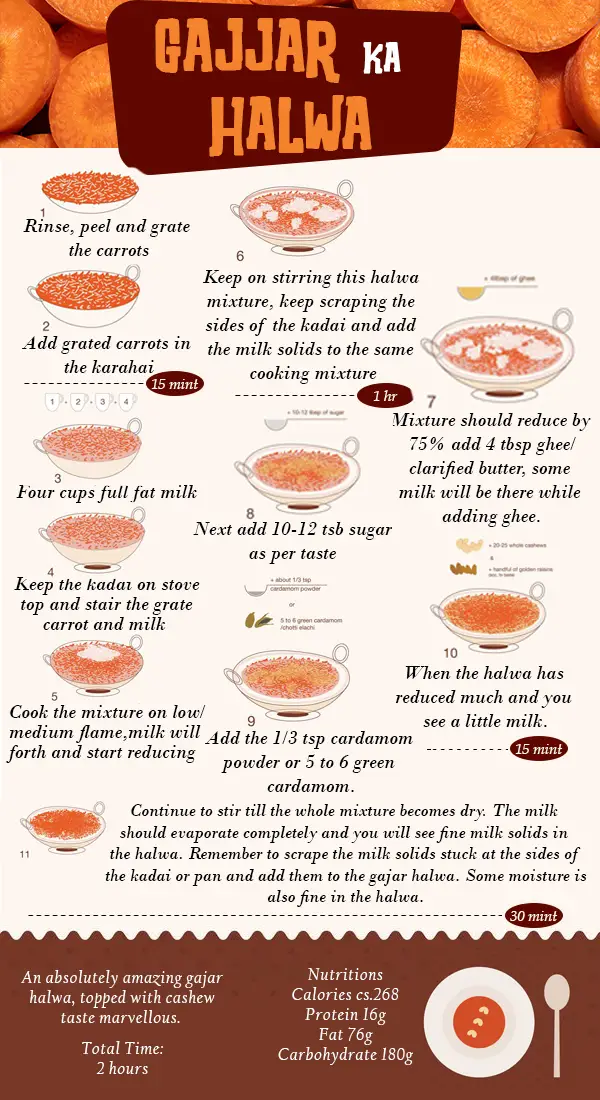
Instructions:
you may also like
Navigating the Rich Tapestry of Arabic Mandi
-
Grate the Carrots Gajjar ka Halwa Symphony of Sweetness :
- Wash, peel, and grate the carrots using a fine grater. Ensure the carrots are fresh and tender for the best texture.
-
Cook the Carrots :
- In a heavy-bottomed pan or kadai, heat 2 tablespoons of ghee. Add the grated carrots and sauté on medium heat until the raw smell disappears and the carrots become tender. This may take around 10-15 minutes.
- Add Milk:
- Pour in the full-fat milk and mix well. Allow the carrots to cook in the milk until the mixture thickens. Stir occasionally to prevent sticking.
- Add Sugar :
- Once the carrots are soft and the milk has reduced, add sugar to the mixture. Stir continuously to avoid caramelization. The sugar will melt, and the halwa will become more liquidy.
- Simmer and Cook :
- Continue to cook on medium heat until the halwa starts thickening again. This process may take another 15-20 minutes. The halwa is ready when it reaches a semi-solid consistency.
- Add Nuts and Cardamom Powder:
- In a separate pan, heat the remaining ghee. Add chopped nuts and sauté until they are golden. Add this to the halwa mixture along with cardamom powder. Mix well.
- Garnish:
- Garnish the Gajjar ka Halwa with chopped pistachios and saffron strands for an extra layer of flavor and visual appeal.
- Serve Hot:
- Serve the Gajjar ka Halwa hot, allowing its rich and indulgent flavors to be enjoyed to the fullest.
Tips Gajjar ka Halwa Symphony of Sweetness :
- Adjust the sugar according to your taste preference. You can start with a smaller quantity and add more if needed.
- Use full-fat milk for a creamier texture.
- Feel free to customize the nut mix based on your preferences.
Gajjar ka Halwa is a delightful dessert that can be enjoyed on various occasions, especially during festive seasons. This recipe captures the essence of the traditional preparation, resulting in a sweet treat that is rich, aromatic, and truly indulgent. Enjoy!
Certainly, let’s explore different perspectives and opinions about Gajjar ka Halwa:
- Culinary Nostalgia:
- For many, Gajjar ka Halwa is not just a dessert; it’s a journey back in time. The rich aroma of carrots simmering in milk and ghee evokes memories of grandmothers and mothers preparing this sweet delicacy during festive seasons. The mere mention of Gajjar ka Halwa brings forth a wave of nostalgia, connecting individuals to the warmth of family kitchens and shared traditions.
- Modern Twist Enthusiast:
- Some culinary enthusiasts embrace the traditional recipe but find joy in experimenting with modern twists. They might add a contemporary touch by incorporating ingredients like saffron-infused sugar or introducing innovative garnishes such as edible flowers. This perspective views Gajjar ka Halwa as a canvas for creativity, blending the time-honored with the avant-garde.
- Health-Conscious Approach :
- From a health-conscious standpoint, Gajjar ka Halwa can be viewed as a dessert that, when prepared with moderation and mindful ingredient choices, can fit into a balanced lifestyle. Using alternatives like reduced-fat milk or natural sweeteners allows individuals to savor the flavors without compromising their health goals.
- International Fusion Enthusiast :
- There’s a growing trend among culinary explorers to fuse traditional Indian recipes with international flavors. Gajjar ka Halwa, in this perspective, becomes a versatile dessert that can be adapted to incorporate global influences. Imagine a Gajjar ka Halwa infused with vanilla, served alongside a scoop of lavender ice cream—a delightful fusion of Indian and Western culinary elements.
- Quick and Easy Advocate :
- For those with busy schedules, Gajjar ka Halwa might be perceived as a time-consuming preparation. However, some kitchen enthusiasts appreciate quick and easy versions of the recipe. Using modern kitchen appliances and pre-grated carrots can significantly reduce the cooking time, making Gajjar ka Halwa a more accessible indulgence.
- Texture Aficionado :
- Texture plays a crucial role in the perception of Gajjar ka Halwa. Some individuals may prefer a slightly coarse texture, relishing the distinct bites of grated carrots, while others might lean towards a smoother consistency achieved through more prolonged cooking and careful stirring. The debate over the perfect texture becomes a matter of personal preference and adds another layer to the overall experience.
- Seasonal Purist :
- There are those who view Gajjar ka Halwa as a seasonal delight to be enjoyed exclusively during the winter months when carrots are at their freshest and sweetest. This perspective emphasizes the importance of using locally sourced, seasonal produce to enhance the authenticity and natural sweetness of the dish.
These diverse opinions highlight the versatility of Gajjar ka Halwa, a dessert that can be appreciated in various ways depending on individual tastes, cultural contexts, and culinary philosophies. Whether cherished for its traditional roots, modern adaptations, or global fusions, Gajjar ka Halwa continues to be a beloved and versatile treat in the world of desserts.
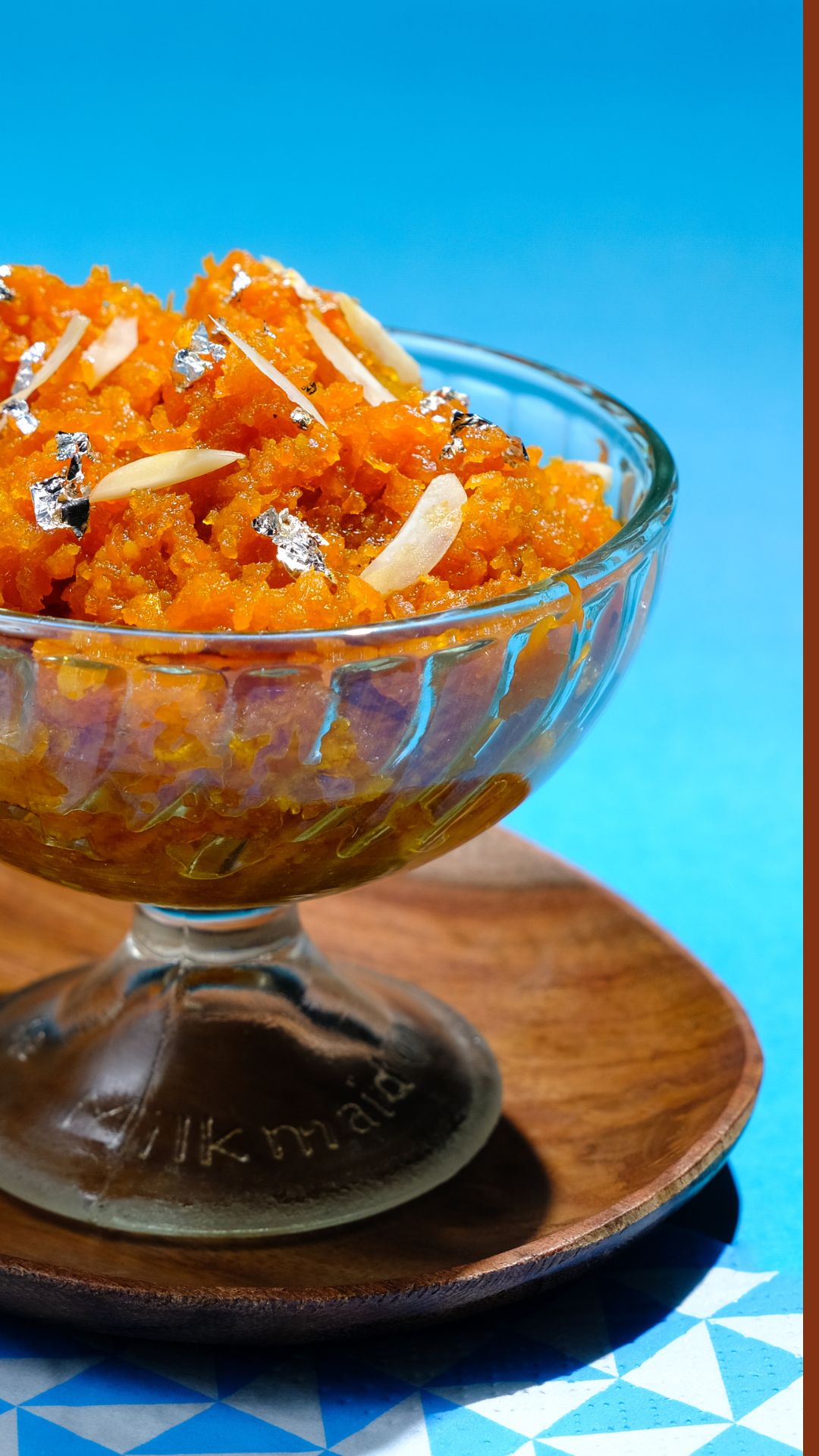
Conclusion :
Gajjar ka Halwa is not merely a dessert; it is a journey through time, a celebration of seasons, and a cultural embrace of sweetness. As one savors a spoonful of this decadent delight, they partake in the collective memory of generations past and present, a timeless connection forged through the culinary symphony of Gajjar ka Halwa. So, whether enjoyed during festive occasions or as a comforting treat on a chilly evening, this Indian dessert invites us to savor the sweetness of tradition and the richness of shared culinary heritage.

 Delicious Shahi Paneer
Delicious Shahi Paneer 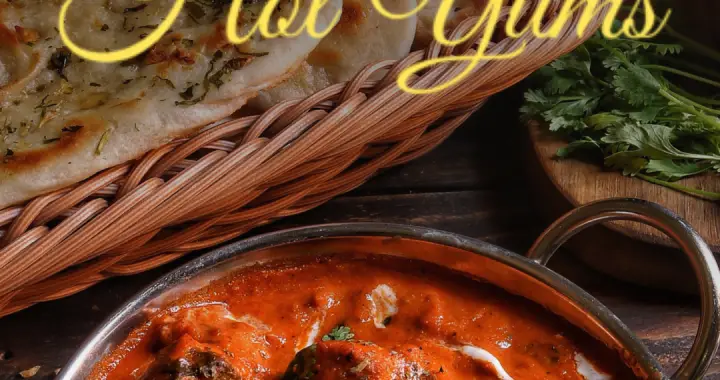 Butter Chicken curry
Butter Chicken curry 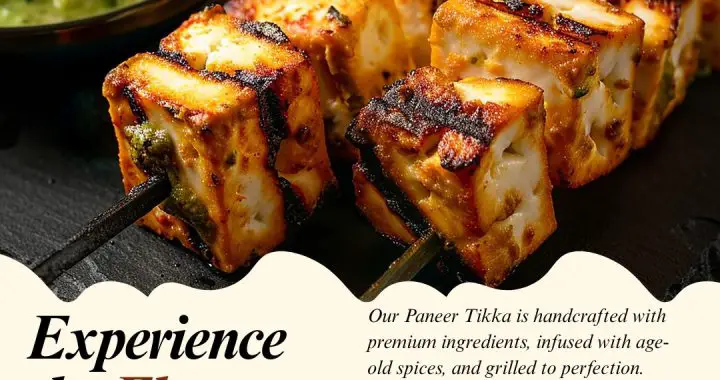 Grilled Paneer Tikka
Grilled Paneer Tikka  Simple Fruit Salad Recipe
Simple Fruit Salad Recipe  Best sushi
Best sushi 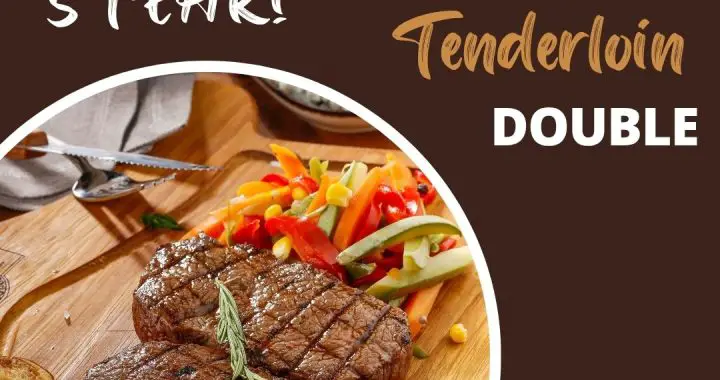 Juicy Tender beef steak
Juicy Tender beef steak
1 thought on “Gajjar ka Halwa Symphony of Sweetness”